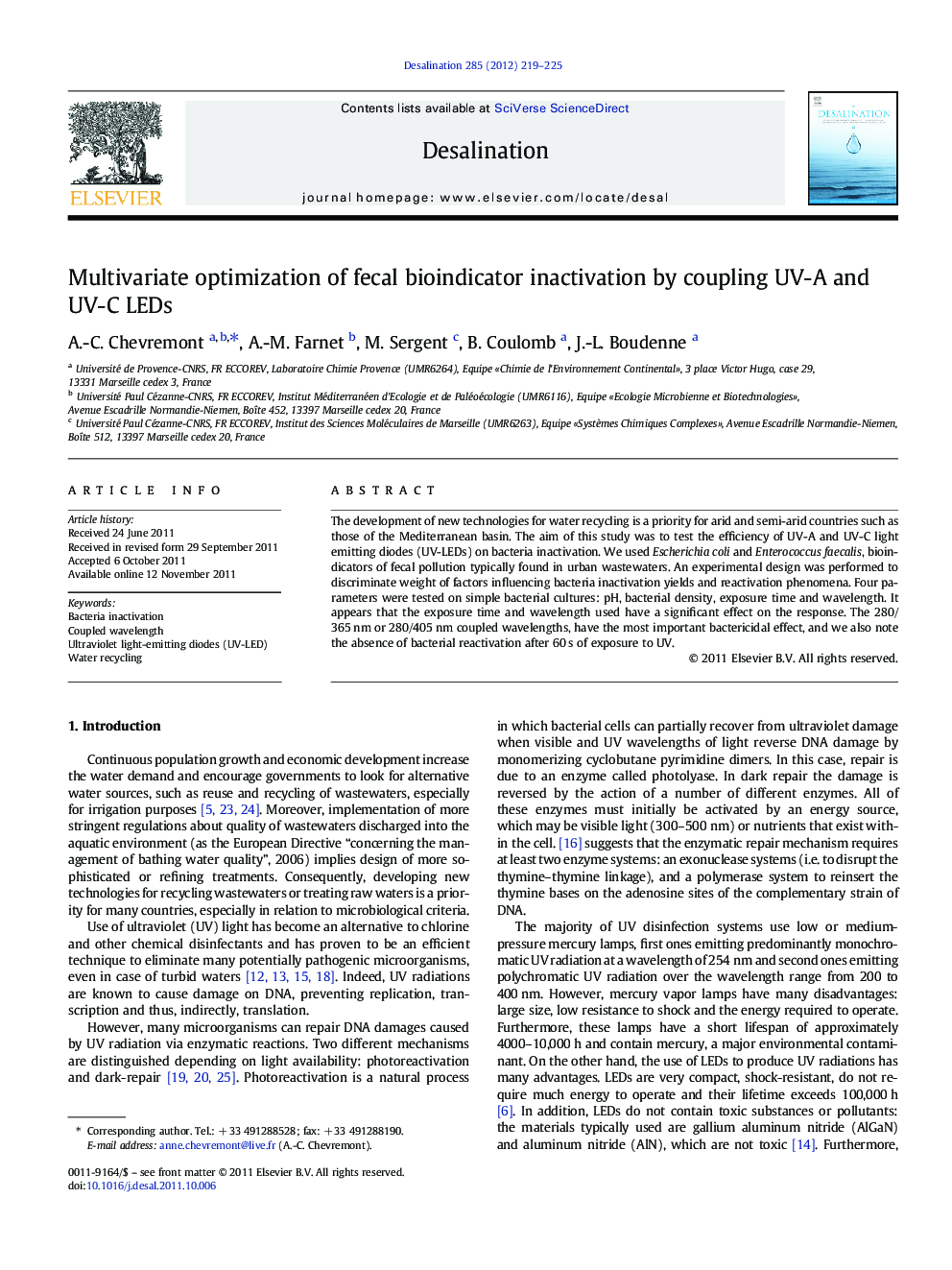| کد مقاله | کد نشریه | سال انتشار | مقاله انگلیسی | نسخه تمام متن |
|---|---|---|---|---|
| 624729 | 1455406 | 2012 | 7 صفحه PDF | دانلود رایگان |

The development of new technologies for water recycling is a priority for arid and semi-arid countries such as those of the Mediterranean basin. The aim of this study was to test the efficiency of UV-A and UV-C light emitting diodes (UV-LEDs) on bacteria inactivation. We used Escherichia coli and Enterococcus faecalis, bioindicators of fecal pollution typically found in urban wastewaters. An experimental design was performed to discriminate weight of factors influencing bacteria inactivation yields and reactivation phenomena. Four parameters were tested on simple bacterial cultures: pH, bacterial density, exposure time and wavelength. It appears that the exposure time and wavelength used have a significant effect on the response. The 280/365 nm or 280/405 nm coupled wavelengths, have the most important bactericidal effect, and we also note the absence of bacterial reactivation after 60 s of exposure to UV.
► The aim of this study was to test the efficiency of UV light-emitting diodes as germicidal treatment.
► Wavelengths in UV-A and UV-C are coupled, combining germicidal and oxidative properties of UV.
► An experimental design allowed discriminating factors influencing bacteria inactivation.
► Coupled wavelengths have the most important bactericidal effect.
Journal: Desalination - Volume 285, 31 January 2012, Pages 219–225